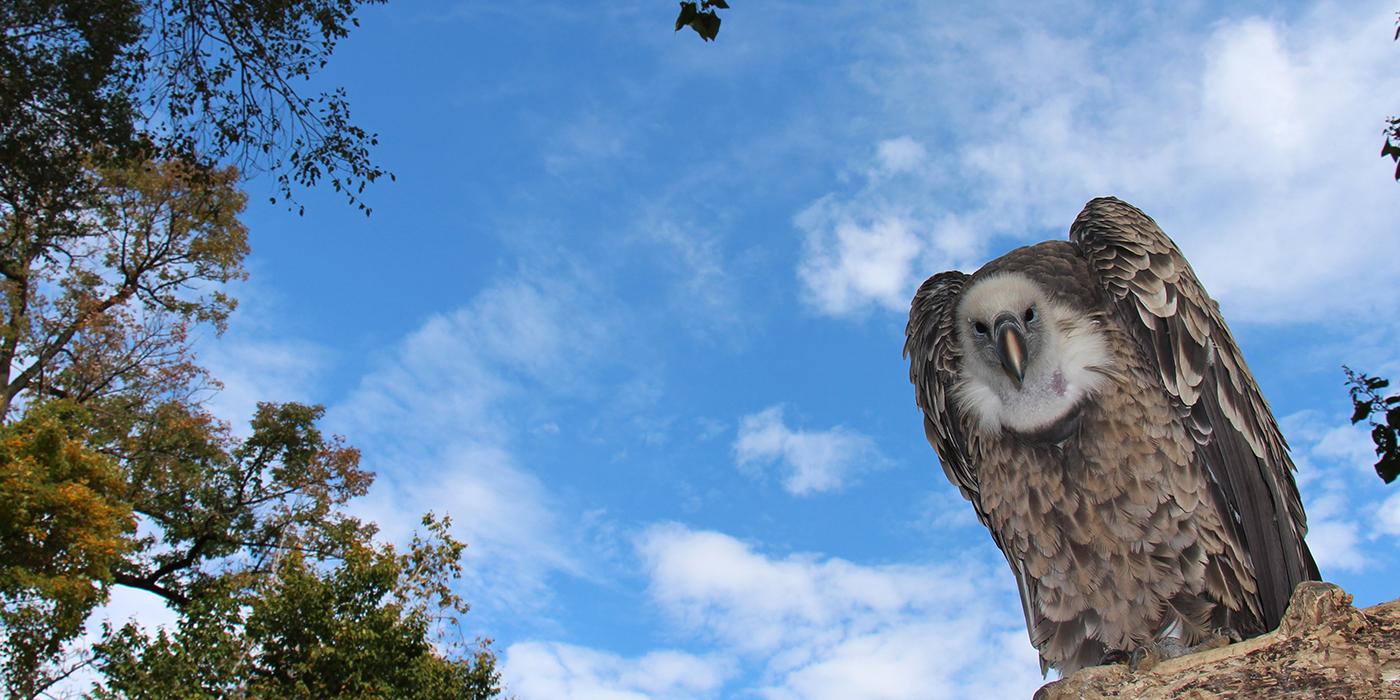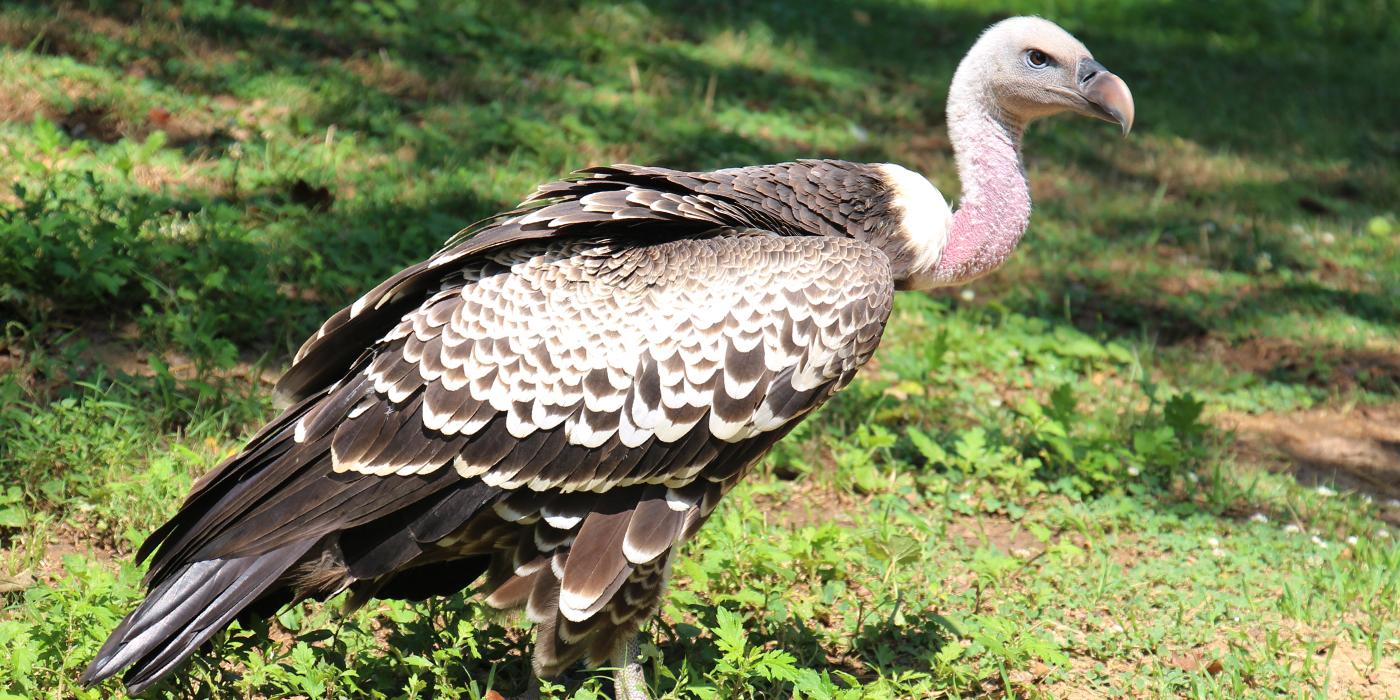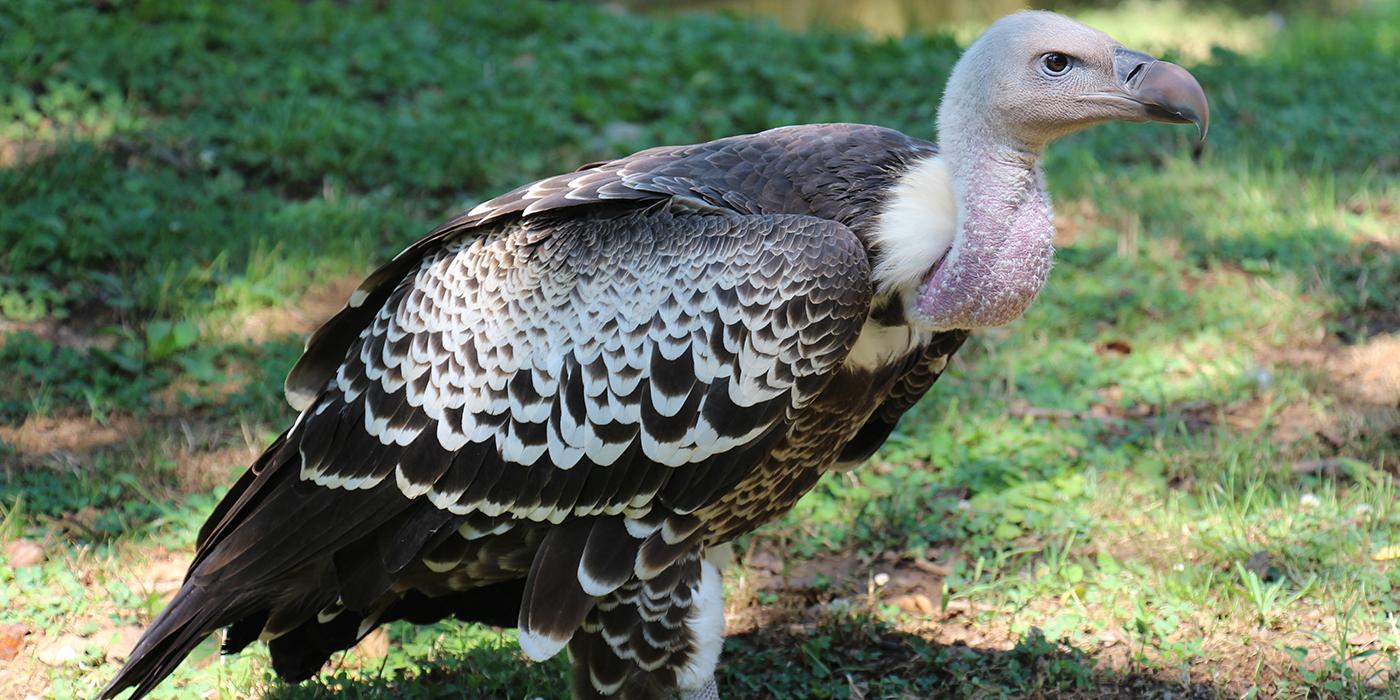Physical Description
Males and females feature similar coloration — brown or black overall, with a white underbelly, thin fluff covering the head and neck and a white collar. Eyes are normally amber to yellow in color. They have exceptionally powerful, pale beaks.
Size
Rüppell's griffon vultures are large African vultures, growing between 33 to 38 inches (84 to 97 centimeters) in height, with an 8-foot (2.5 meter) wingspan.
Native Habitat
Populating the Sahel region of Africa, Rüppell's griffon vultures range from Senegal, Gambia and Mali in the west, to Sudan, South Sudan and Ethiopia in the east. They can also be found through the savanna in Kenya, Tanzania and Mozambique. Breeding often requires a cliff face, and as such, Rüppell's griffon vultures reside near mountainous regions, but will also travel through woodlands and grasslands in order to find food.
Lifespan
Lifespan for Rüppell's griffon vultures is thought to be up to 40 to 50 years.
Communication
Sharing a carcass can often result in fights between vultures, with grunting, hissing, stomping and a coloration change of the neck to a deep red used to show dominance and ward off fellow scavengers.
Food/Eating Habits
This species will spend much of its time soaring through the skies at great altitudes searching for food, sometimes staying in the air for six to seven hours each day. They use slow, powerful wing beats or rely on strong winds to conserve energy and soar.
A notorious scavenger, Rüppell's griffon vultures dine exclusively on carrion. They rely on vision alone to detect prey. When the vulture spots a carcass from the air, the vulture will swoop down nearby and run with its wings spread and neck extended towards its meal. Rüppell's griffon vultures insert their heads under the skin of the carcass, sometimes climbing inside the ribcage to consume it. The head and neck are devoid of most feathers, evolved to keep the mess of blood and meat to a minimum.
As scavengers, Rüppell's griffon vultures have the added adaptation of being able to consume rotten meat, even if it contains anthrax, botulism and cholera. Bacteria are then destroyed in the vulture's stomach. A large meal can last at least four days for these vultures.
Contrary to popular belief, Rüppell's griffon vultures do not rely on the already-killed prey of larger predators for the bulk of their food source. While they will consume lion leftovers if found, much of what they eat has not been preyed upon, but is a result of old age, disease, broken-limbed animals or still-born young.
At the Smithsonian's National Zoo, Rüppell's griffon vultures are fed rabbits, rats, Nebraska Brand Feline Diet (carnivore diet made with beef) and femur bones. Small pieces of beef may be offered during training sessions.
Social Structure
These animals are highly social, nesting and gathering in large flocks numbering in the thousands.
Reproduction and Development
Breeding takes place on cliff faces, with pairs historically numbering in the thousands. On an open ledge, Rüppell's griffon vultures create a platform of sticks and grass on which they lay a single egg, traditionally after the rainy season. Trees can also sometimes provide a nesting option.
Females will often take sticks from other nests, while males arrange them into their own formation. Incubation lasts 55 days, and once hatched, both parents will take care of the chick. A down-covered gray hatchling, the chick will fledge around 150 days, gaining independence just before the next breeding cycle begins.
Conservation Efforts
Rüppell's griffon vultures are an endangered species. This species has declined rapidly, going from a species of least concern in 2004 to near threatened in 2007 and critically endangered in 2012. Habitat loss, declines in food sources, hunting for trade, persecution and poisoning are factors in their precipitous decline.
In East Africa, poisoning from toxic pesticides outside of protected areas is a major threat, as is poisoning from the ingestion of an anti-inflammatory drug found in Tanzanian livestock. Hunting or collection for trade presents an issue, as parts of Rüppell's griffon vultures are popular in traditional juju practices. This is considered the greatest, if not only cause of local extinction of the species in Nigeria.
Fortunately for Rüppell's griffon vultures, conservation actions are underway, and even more are proposed and in progress. Rüppell's griffon vultures reside in a number of protected areas throughout Africa, helping to ensure habitat for future generations.
Additionally, the detrimental effect of some livestock drugs on this species was addressed at the 2008 World Organization for Animal Health in Senegal, and as a result, delegates voted to ask members to seek solutions for the problem.
Proposed conservation measures include establishing legal protection, particularly in West Africa and among breeding colonies, discouraging the use of veterinary medicine that can harm vultures and better monitoring remaining populations.
Help this Species
Practice ecotourism by being an advocate for the environment when you’re on vacation. During your travels, support, visit or volunteer with organizations that protect wildlife. Shop smart too! Avoid buying products made from animals, which could support poaching and the illegal wildlife trade.
Share the story of this animal with others. Simply raising awareness about this species can contribute to its overall protection.
Try fundraising for conservation organizations in new and fun ways. You could donate your birthday to conservation, or host a bakesale to benefit wildlife!
Smithsonian's National Zoo and Conservation Biology Institute. (n.d.). Ruppell's griffon vulture. Retrieved December 2, 2025, from https://nationalzoo.si.edu/animals/ruppells-griffon-vulture
Animal News

Giant Panda Qing Bao Gets a Checkup ›

7 Spooktacular Animal Facts for Halloween ›



